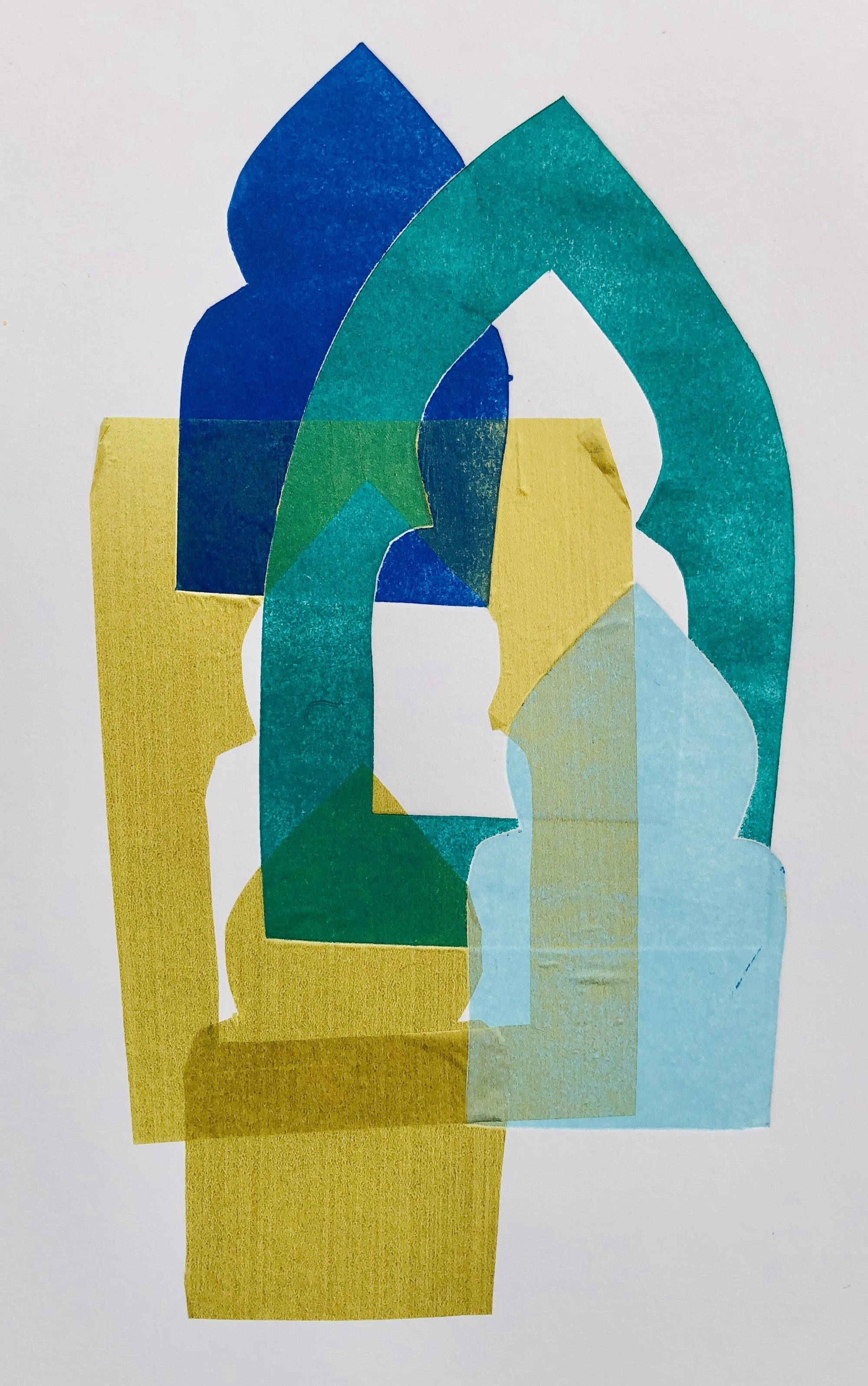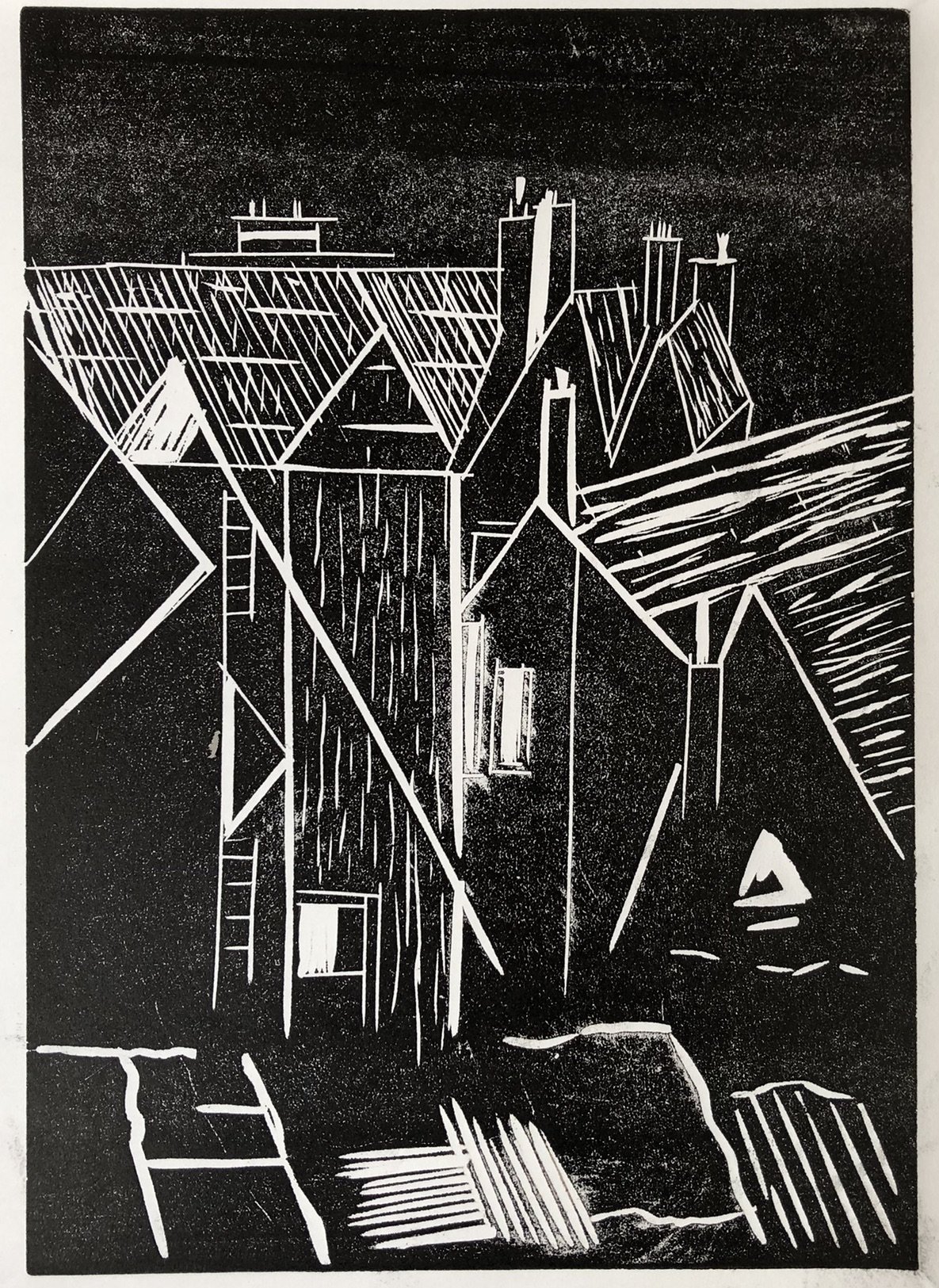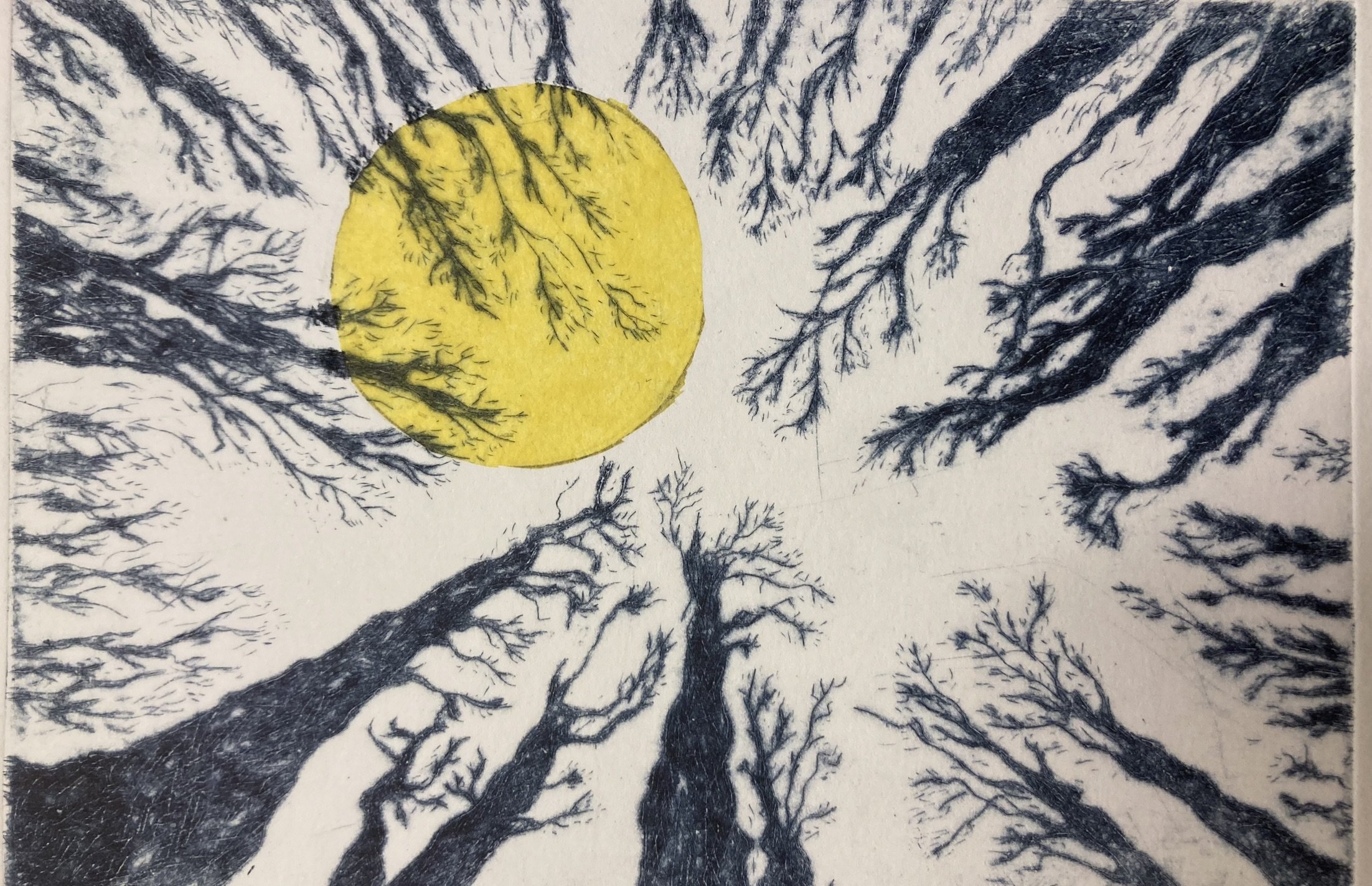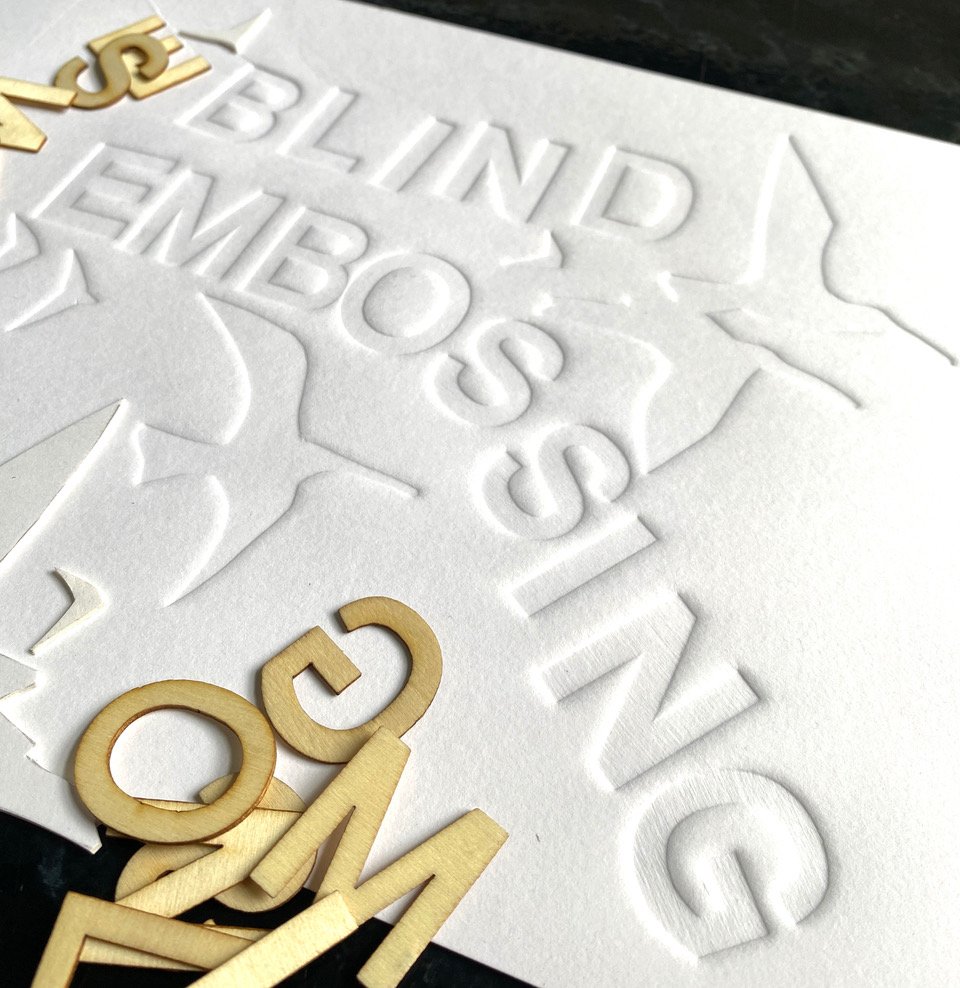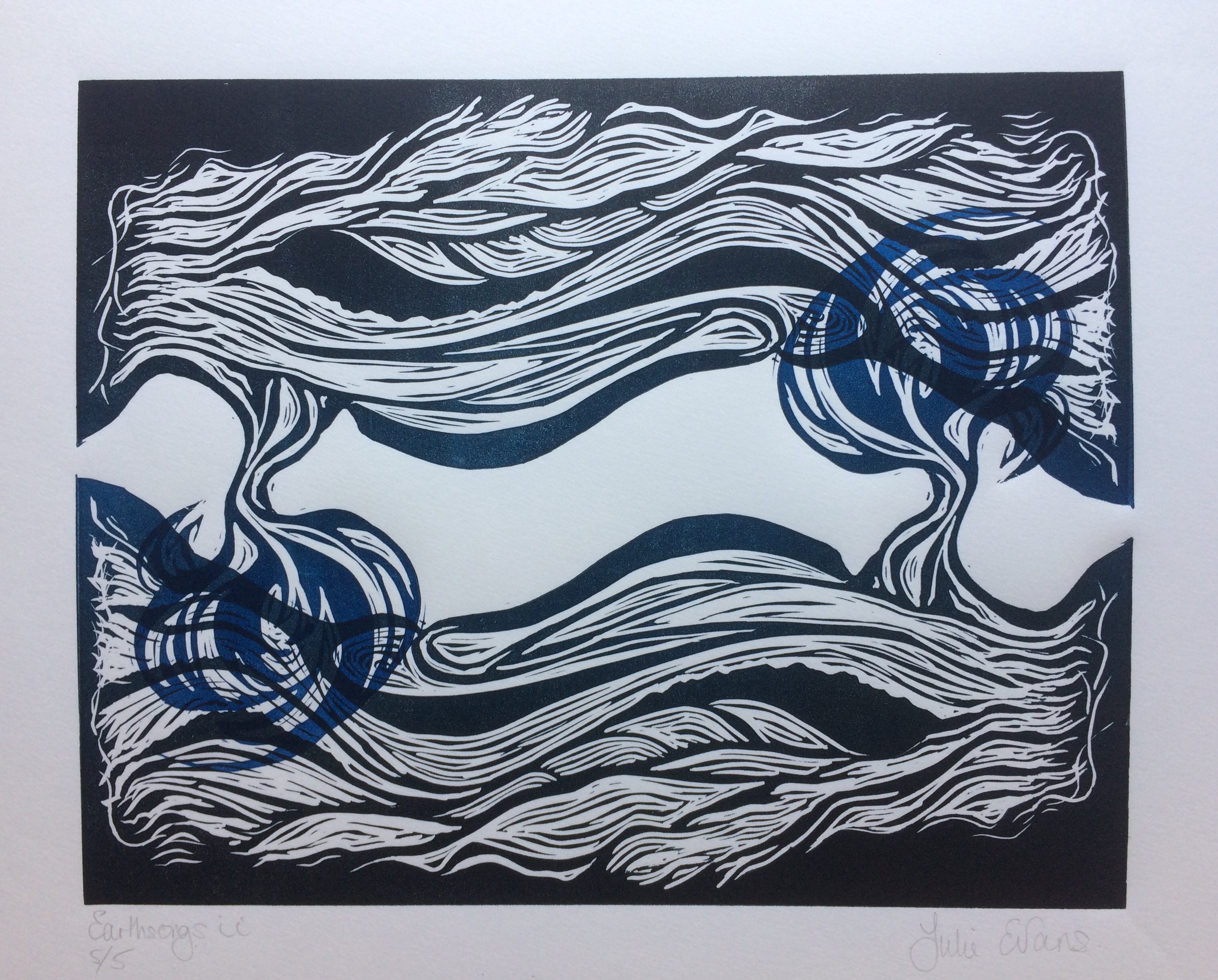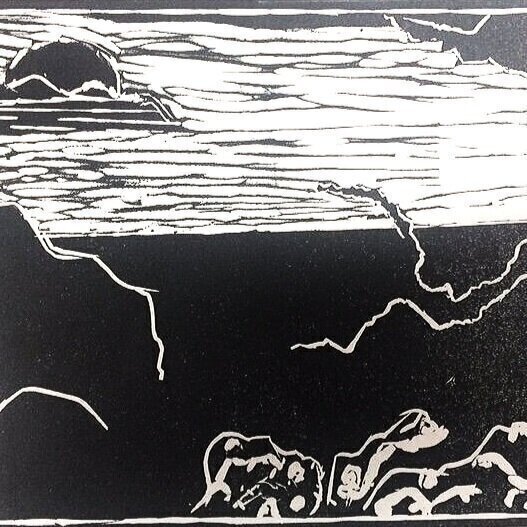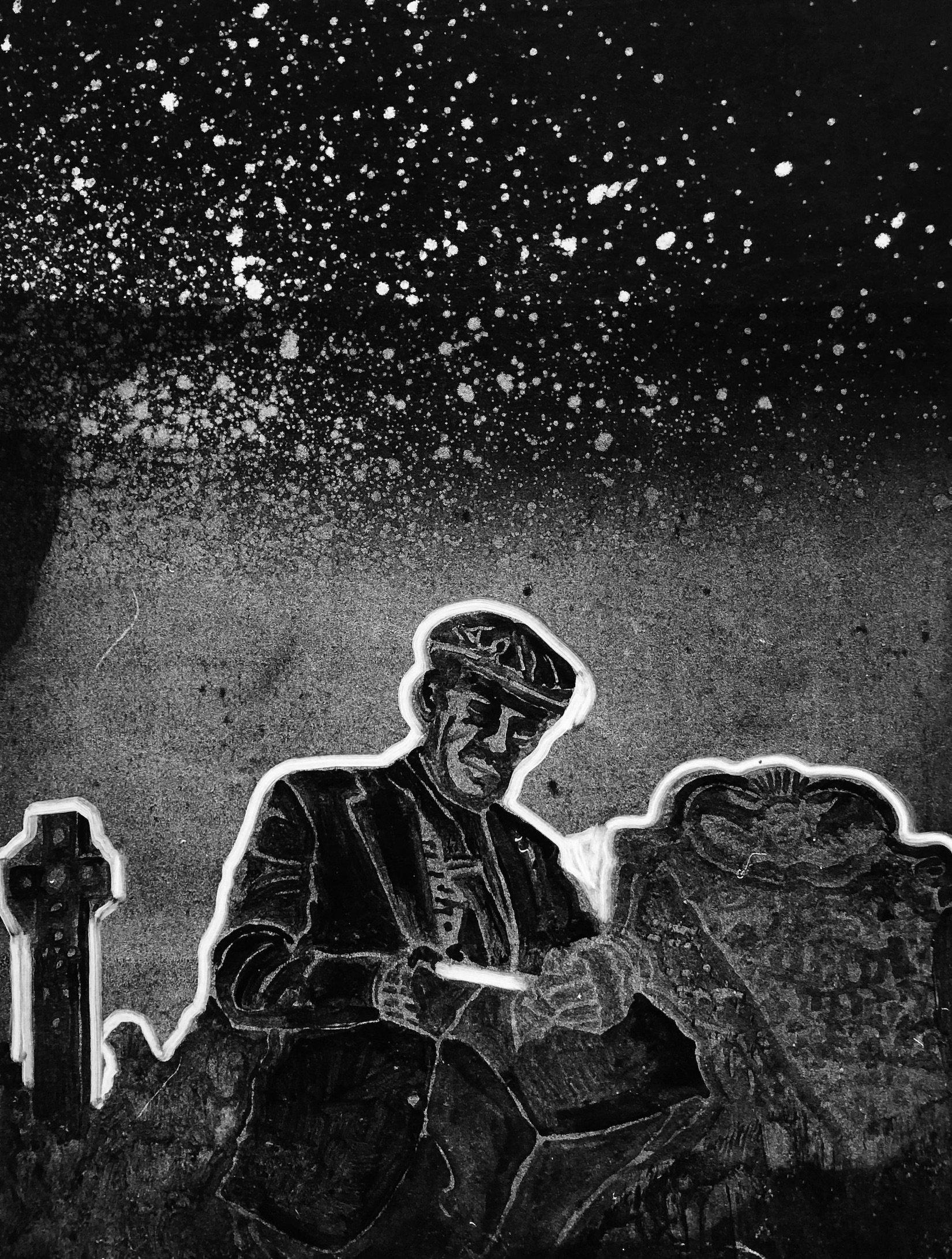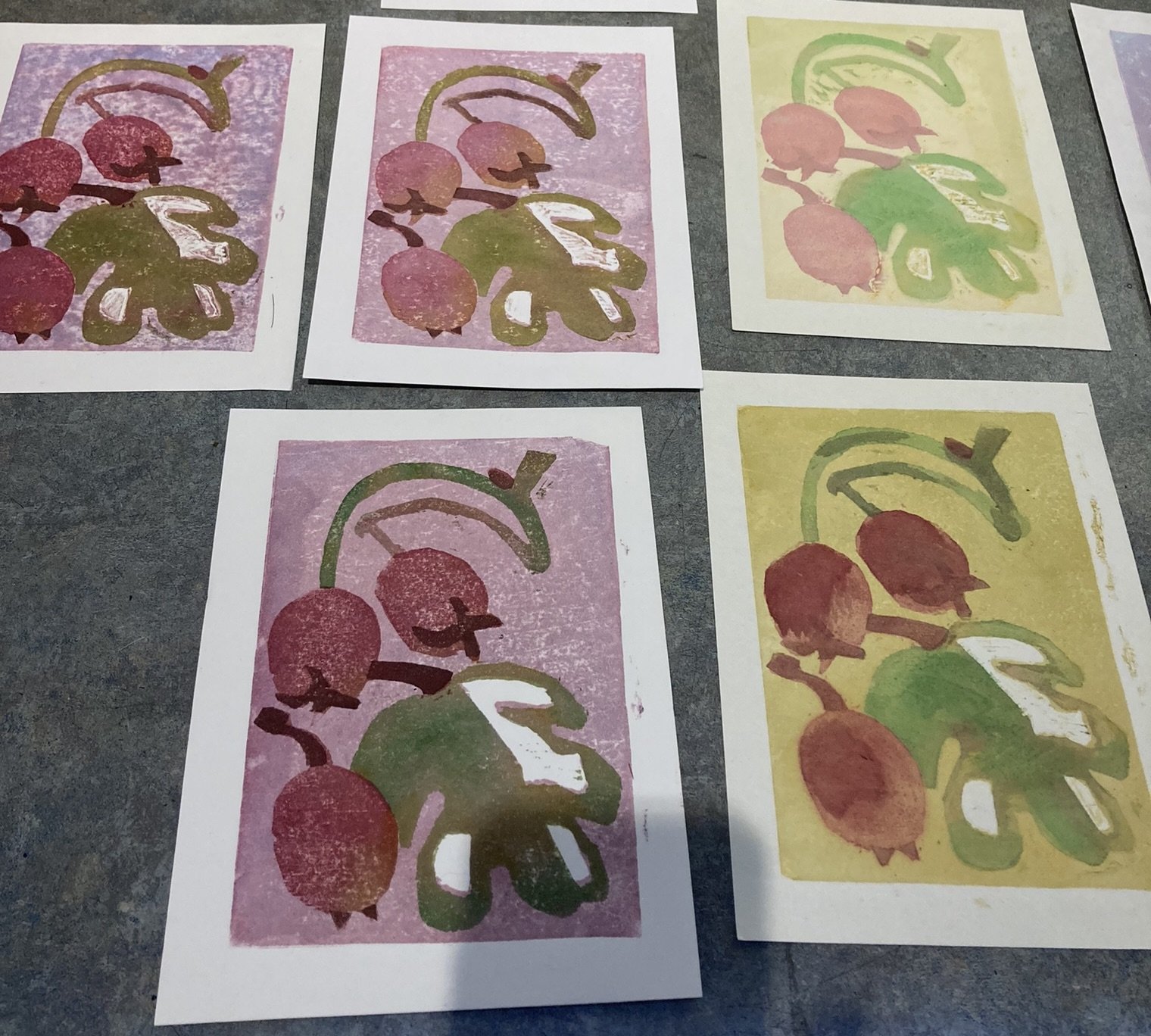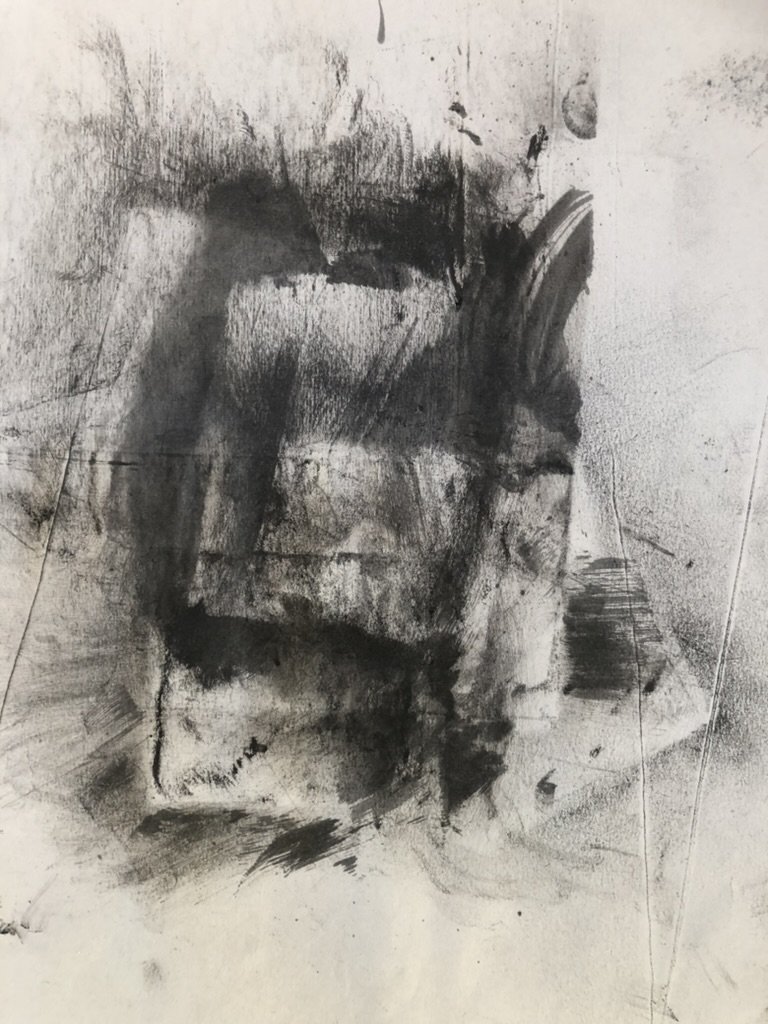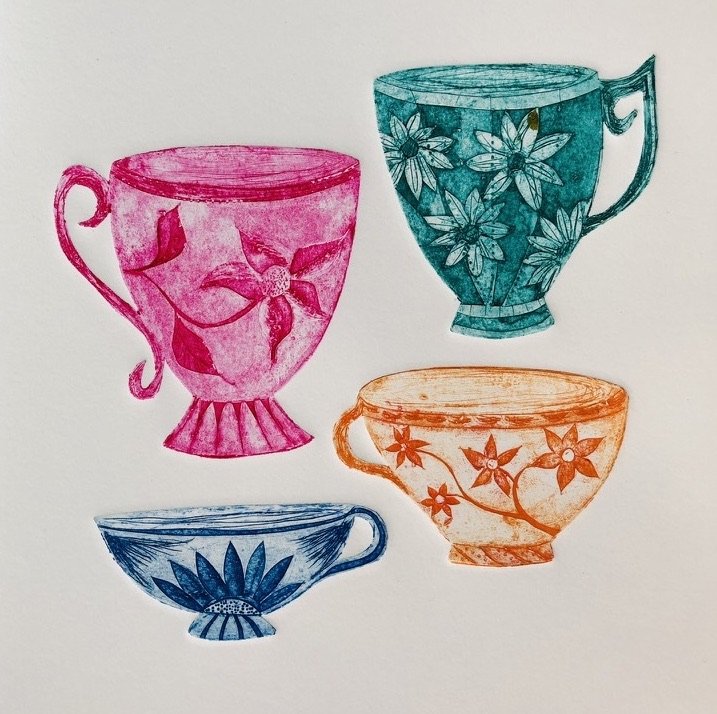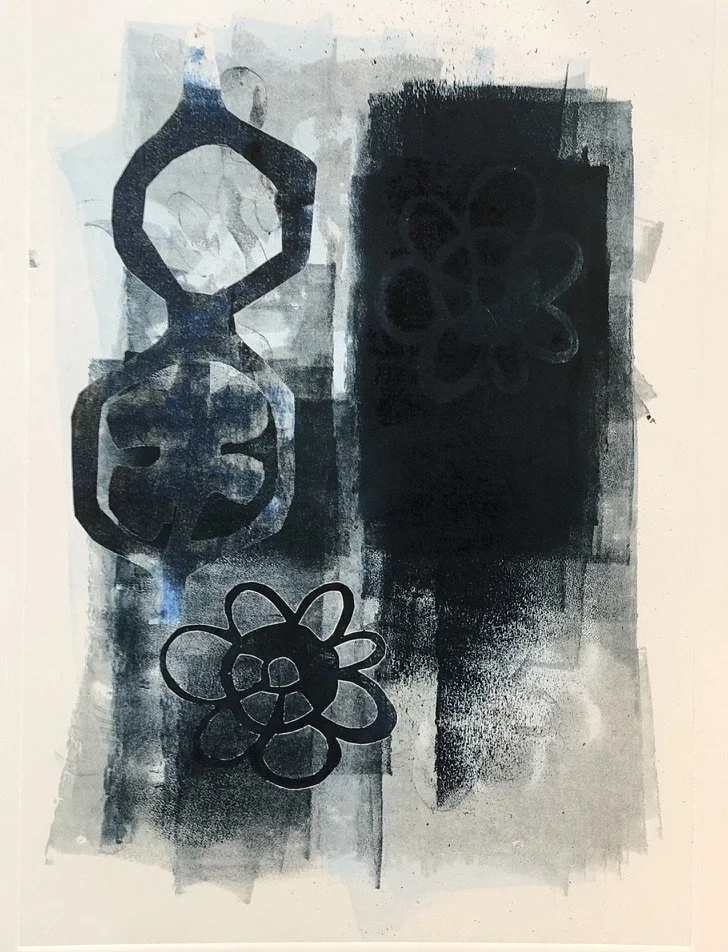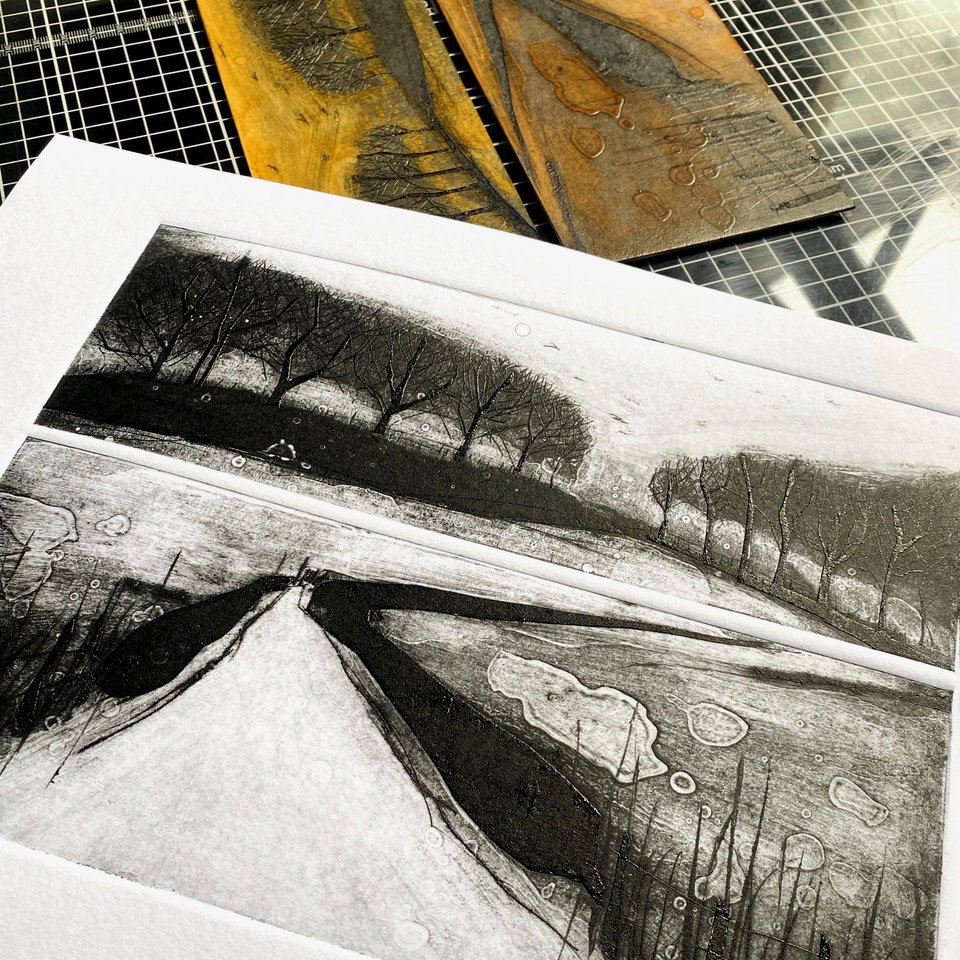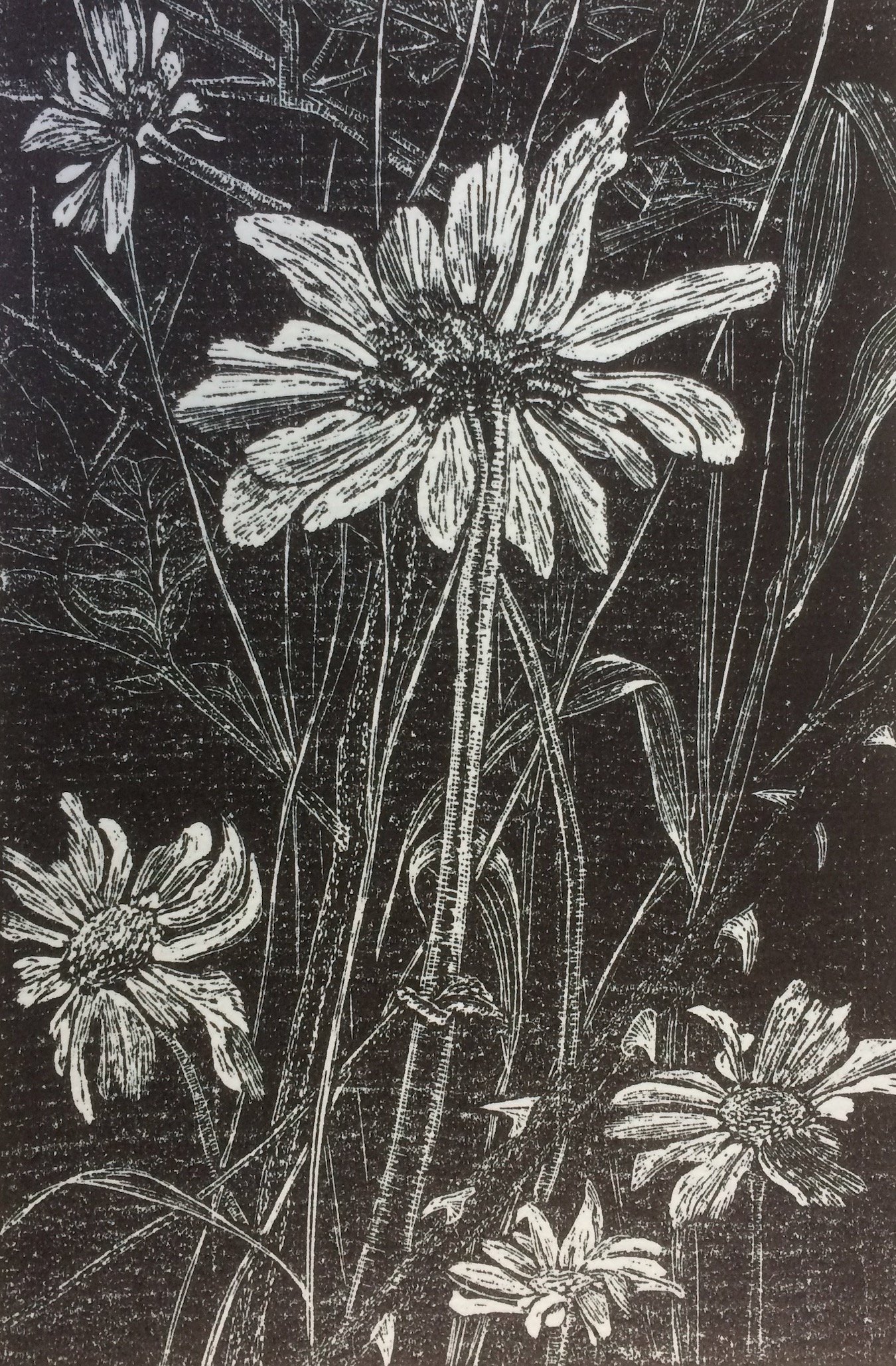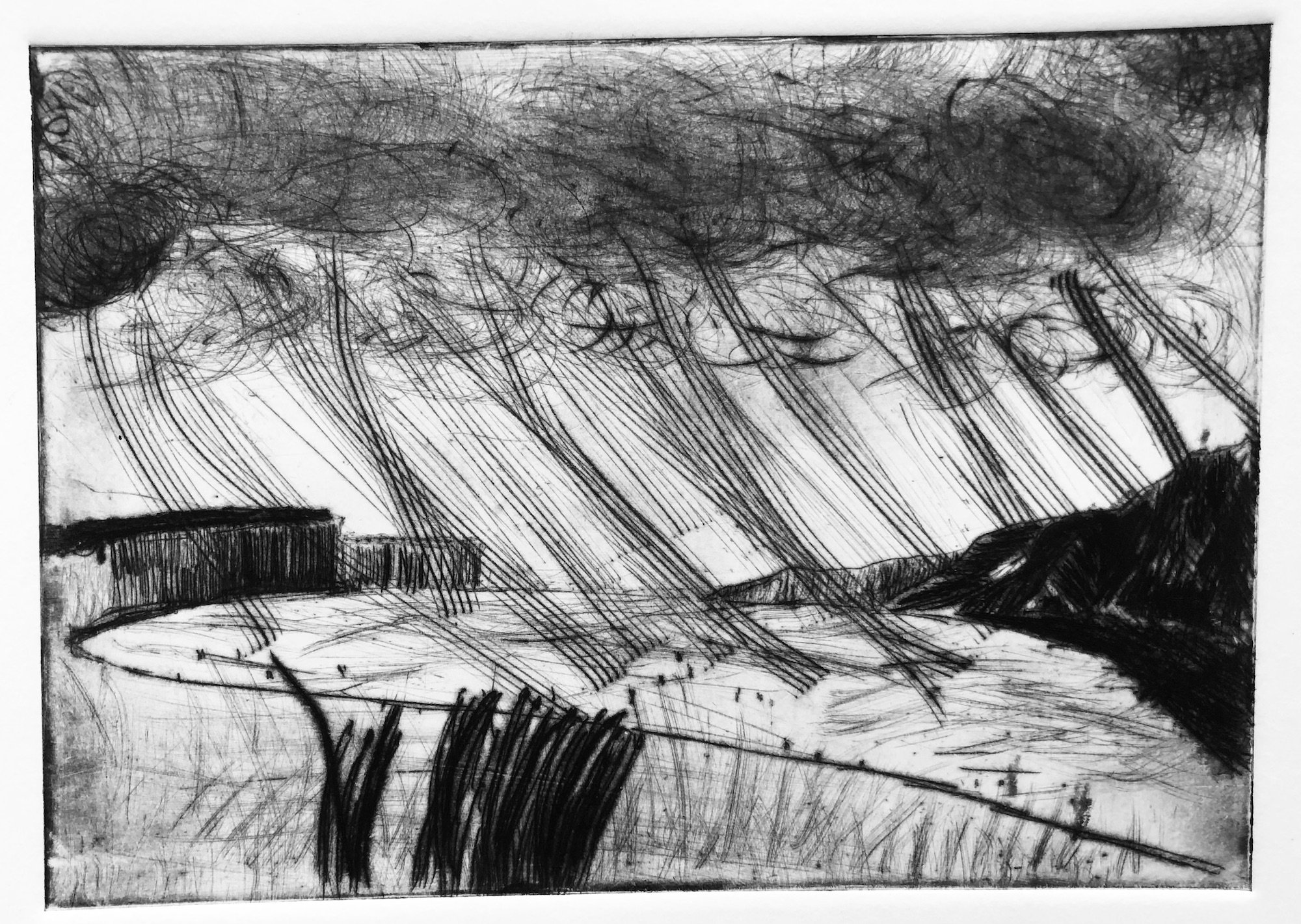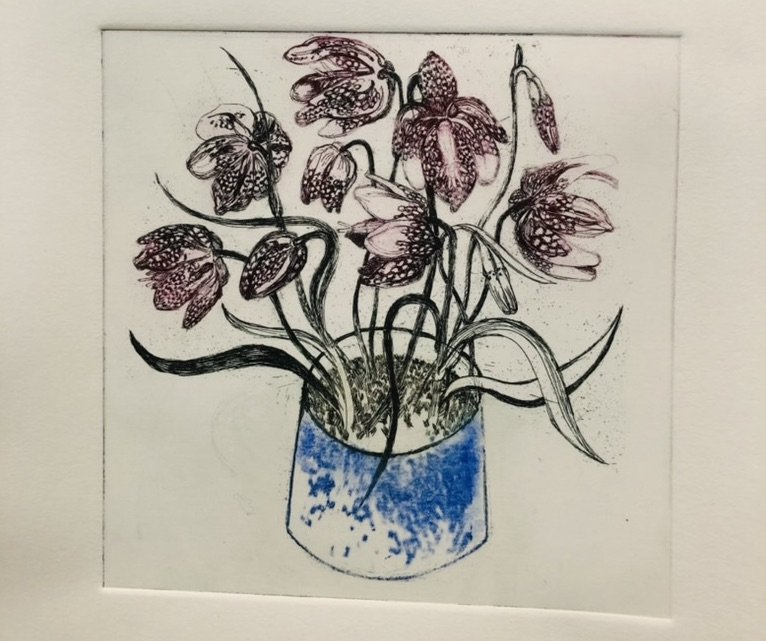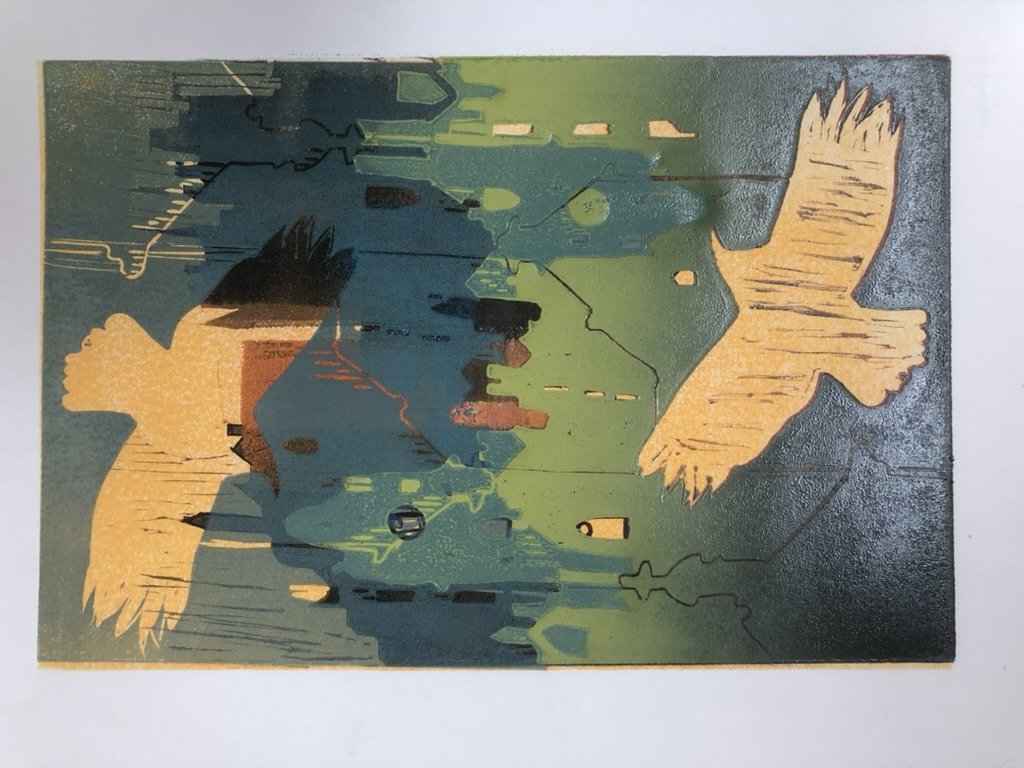INTRODUCTION TO ETCHING ON ALUMINIUM PLATE
Come and experience this one-day workshop that will introduce you to the exciting, and safer, range of materials and techniques made available through etching with copper sulphate.
Although you will use some traditional materials and processes to make your plates, many of the methods you will experiment with cannot be created by using traditional, acid based etching techniques.
You will be introduced to all stages of the etching process, from drawing and etching your plate in texture, line, and tone, to printing in colour onto different papers and materials.
By the end of the workshop, you will understand how to develop your own creative ideas through etching; have gained some technical competence in the use of etching tools and practiced how to ink and print successfully.
PRINTING PAPER SHAPES IN COLOUR COMPOSITIONS
This is one of the new workshops from Iron Press.
During the workshop the primary focus will be on working with shape and colour.
You will explore design and composition, using different ways to build dynamic images. Emphasis will be placed on overprinting onto a variety of papers using texture and different densities of ink.
Using stencils is a well-established art form with all manner of applications – from graffiti art to commercial packaging, making labels and writing words on a range of surfaces. Exploring stencils will provide your compositions with some surprises.
DRYPOINT
Drypoint is the simplest and most direct of the intaglio (incised) printing techniques. It is an excellent way for beginners to create their images, as no acids or complex procedures are involved in making the plate.
Using any sharp point or abrasive tools, marks and lines are scratched onto a sheet material, like plastic or soft metal; the grooves are then filled with ink and printed on an etching press.
Because the image is scratched directly onto the plate, it accommodates both a high level of illustrative detail as well as spontaneous, gestural mark making.
During the workshop you will work on clear plastic plates and be shown inking techniques particular to Drypoint.
LINO CUTTING
During the workshop you will design, cut, and print your own linocut.
You will be shown examples of linocut plates and prints that use different cutting techniques and be given a demonstration in preparing your design and cutting your image.
Once you have finished cutting your design, you will complete each Linocut byprinting on a Victorian, Albion Press.
The initial printing is straightforward, very exciting and always great fun. The next stage allows you to explore printing onto different papers and surfaces.
EXPRESSIONIST WOODCUTTING - RAW AND RUGGED
In the early twentieth century the artists we label as Expressionists had a strong connection with printmaking, particularly the adoption of the woodcut as a primary artistic medium. It was used particularly by a German artistic collective called Die Brücke. Artists included, Max Beckmann, Erich Heckel, Ernst Ludwig Kirchner, Kathe Kollwitz, Franz Marc, and many more artists. Its visual vocabulary used distorted, stylized forms reflecting a direct visualisation of feelings and emotional subjects.
During the workshop you will have the opportunity to use wood as a vehicle of expression. This may include distressed surfaces, using broken and damaged panels, or selecting wood that is heavily grained. Coupled with your visual ideas, creating the printing blocks will be challenging, experimental and highly informative.
The workshop will focus on how ‘Expression’ is created through a variety of methods and materials, as well as ideas, feelings and gestural marks.
The workshop will recognise the spirit and principles of the German Expressionists by attempting to make images as simple and personal as possible.
You will use simplified forms and the medium's potential for bold, flat patterns and rough woodcutting effects.
During the workshop you will ‘Express’ your ideas through tapping into your inner response to the visual information you have collected.
Central to success will be the sense of bringing your own interpretation to subjects in an abstracted or exaggerated way. A key element is the sense of creative freedom this brings to your work.
Exaggeration was a key element in Expressionism.
MONOTYPE IN COLOUR - USING SEVERAL PLATES
Monotype printing covers a wide range of activities in different printmaking disciplines.
It is one of the most flexible printing methods, allowing you to work with drawing, painting, stencilling and transfers in an experimental and direct way.
The essential point of this method is that no two prints are alike. Although images can be similar, editioning is not possible and each work you produce is unique.
If you enjoy experimenting and playing creatively with ink and paper – monotype printing is a great way to explore your creativity.
In painterly monotype, using multiple plates, you will be shown several mark making techniques and introduced to some of the wonderful effects of overprinting in colour.
Multiple plates allows more predictable design results as each plate is transparent and can indicate what the colours will look like when printed.
WOODCUT
Woodcutting is one of the oldest and simplest printmaking techniques. It has played a very significant part in history as well as the history of art.
During the workshop you will create your own printing block, print onto paper and other materials using a Victorian, Albion Press.
Central to the success of your work are two factors –
The type of wood you use - and - the tools you use.
You will learn how to design for print, efficiently cut the block, print in monotone and colour and experiment with printing techniques.
The workshop is designed to give you a broad understanding of the woodcutting process, which you may choose to practice and experiment with in your own time.
MONOTYPE USING MULTIPLE PLATES
Monotype printing covers a wide range of activities in different printmaking disciplines.
It is one of the most flexible printing methods, allowing you to work with drawing, painting, stencilling and transfers in an experimental and direct way.
The essential point of this method is that no two prints are alike. Although images can be similar, editioning is not possible and each work you produce is unique.
If you enjoy experimenting and playing creatively with ink and paper – monotype printing is a great way to explore your creativity.
In monotype, using multiple plates, you will be shown several mark making techniques and introduced to some of the wonderful effects of overprinting in colour.
Multiple plates allow more predictable design results as each plate is transparent and can indicate what the colours or tonal values will look like when printed.
DRYPOINT WITH CHINE COLLE
Drypoint is the simplest and most direct of the intaglio (incised) printing techniques. It is an excellent way for beginners to create their images, as no acids or complex procedures are involved in making the plate.
Using any sharp point or abrasive tools, marks and lines are scratched onto a sheet material, like plastic or soft metal; the grooves are then filled with ink and printed on an etching press.
Because the image is scratched directly onto the plate, it accommodates both a high level of illustrative detail as well as spontaneous, gestural mark making.
During the workshop you will have the opportunity to work on clear plastic or aluminum plate; use a range of traditional hand tools and contemporary power tools and experiment with inking techniques particular to Drypoint.
CHINE COLLE is French for thin paper collage. Chine collé is literally collaging a thin piece of paper onto a heavier piece of paper. It is common to use colored paper or elements printed via other processes to add color to your print without having to make another plate.
The images are unique, one off images created directly on your printing plate. Combined with Drypoint, chine colle’ facilitates the investigating of colour and overprinting techniques.
Please note: Using clear plastic allows you to trace photographs, photocopies or images from your sketchbook and is an excellent way to explore Drypoint
BLIND EMBOSSING
Blind embossing is an exciting way to make images using no ink, creating subtle textures and shapes that change with the angle of the light.
In this experimentally workshop we will use cut out shapes, found objects and textures to create collages that we will print onto damp paper. We will start with the basics and build up layers and see what is possible.
It is a technique that can be combined with many other print forms and together we will explore whats possible setting you up to continue creating after the workshop taking your prints to the next level.
EXPERIMENTAL DRYPOINT WORKSHOP
Dive into the simplest and most direct of intaglio techniques in this one-day drypoint workshop, perfect for beginners and creatives alike! You’ll use sharp tools to scratch marks directly onto plastic or soft metal plates, creating grooves that we’ll fill with ink and print using an etching press.
This technique is wonderfully versatile, allowing for both detailed illustrations and spontaneous, gestural marks. You’ll experiment with clear plastic and aluminum plates, work with traditional hand tools, and try out various inking techniques unique to drypoint.
We’ll be working on A4 & A5 the transparent plates make it easy to trace images directly, so feel free to bring any inspiration, though we’ll have plenty of resources in the studio.
All materials are provided – just bring your creativity (or a blank slate) and get ready for a day of inky fun!
INTRODUCTION TO LINOCUT
This workshop is designed primarily for those who have very little or no experience of linocutting.
You will learn how to design, cut and print your own linocut using high quality tools and materials.
Working initially with black oil based ink you will print your block using our handsome Victorian Albion press. This is always very exciting and great fun. Once you are comfortable inking and printing in a single colour we will introduce some colour by way of rainbow rolling, printing onto coloured papers and printing over other images.
By the end of the workshop you will be experienced enough to begin exploring the many other ways of working with linocut.
ETCHING WITH MASKS AND STENCILS
Etchings are produced by applying a wax ground to a plate, then drawing lines through the wax, exposing the bare metal. The plate would then be prepared for acid or mordant bath. The action of the mordant eats away the exposed metal, creating grooves in the metal which will hold ink and create the printed image.
The image produced using an etching plate can be modified by stencils at three stages of the etching process: After the ground has been applied; during inking of the plate, and on the finished print itself. Masks can be used to protect areas of the plate or paper whilst working on adjacent areas. They also make it possible to ink up with more than one colour.
In this workshop participants will prepare grounded plates with a soft ground. Then using simple shapes you will be cutting your own stencils and be using precut pattern stencils to make an image.
Etching is often treated as a linear medium in printmaking, particularly in one’s early days of making prints . I hope as you explore the techniques embedded in this workshop you will start to consider the exciting possibilities of pattern, shape, tonal values and balance in the composition.
All materials will be provided. The plates available will be A5 . You can bring reference material, but we need to use very simple, basic shapes to make an image so if you wish to bring reference material bear this in mind.
Inking plates can be a messy business, so bring an apron or overall to protect your clothes, avoid wearing full or floppy sleeves.
I look forward to meeting you and sharing this interesting way of making images.
Jenny Hack Print Tutor
INTRODUCTORY LEVELS I AND II COURSEWORK
Here are some of the images from the Six Week Course for Beginners.
The work produced during the first, post-lockdown, Beginners Course has been a happy and creative success and the feedback has been completely positive.
It is a reminder of how wonderfully different printmaking techniques can stimulate creativity and encourage people to experiment and explore their own visual ideas.
PAINTERLY MONOTYPE
Monotype printing covers a wide range of activities in different printmaking disciplines.
It is one of the most flexible printing methods, allowing you to work with drawing, painting, stenciling and transfers in an experimental and direct way.
The essential point of this method is that no two prints are alike. Although images can be similar, editioning is not possible and each work you produce is unique.
If you enjoy experimenting and playing creatively with ink and paper – monotype printing is a great way to explore your creativity.
In painterly monotype and mono printing, you will be shown several mark -making techniques and introduced to some of the wonderful effects of overprinting in tone and colour.
ETCHING ON COPPER
During the workshop you will be using ferric chloride to etch the copper.
You will have the choice of etching your image A6 or A5 in scale.
Initially you will be working in line on a hard ground. It is the fine, sharp quality of the line in copper etching which makes images so distinct and superior to using most other metals.
There may be the opportunity to work in tone, depending on time.
Etching copper in line with ferric chloride is much slower and safer than etching with nitric acid, which was commonly used in art studios until recent times.
DRYPOINT FROM A MODEL
The tradition of working from the nude model has a long history and is perhaps most familiar to the public through the drypoints of Rembrandt and Whistler.
Many artists explore making images and ideas through drypoint. When combined with working directly from the model, very exciting and unexpected results can happen.
During this workshop you will have the opportunity to explore drawing directly onto metal or clear plastic plate. Alternatively you can trace some of your sketches and drawing and make expressive interpretations of these as you scribe the plates.
The workshop will give you the opportunity to experiment with materials, images and techniques; allow you to explore mark-making using line and tone; assist you in printing your drypoints and hopefully extend your visual language.
How you approach the work is up to you. The workshop will not be based on an academic approach, but rather an experimental one that allows you to respond to the model in your own way. You can choose to work in abstract ways as well as more structured, measured ways.
By the end of this exciting and challenging workshop, you will have made a number of plates and have printed a range of images.
This workshop is suitable for beginners as well as experienced printmakers.
JAPANESE STYLE WOODCUTTING - ONE DAY MOKUHANGA WORKSHOP FOR BEGINNERS
Although similar to woodcut in Western printmaking , you will be emulating the technique of Mokuhanga.
Mokuhanga is the Japanese word for wood block print. In Japan its meaning is the print itself, but in general contemporary use it means both the print and the technique.
The technique involves using water-based colours like watercolour or gouache—as opposed to the western woodcut technique, which mainly uses oil-based inks.
The watercolours provide a wide range of vivid colours to explore with your images.
During the workshop you will have the opportunity to cut and print at least two images, each printed with several colours depending on the design.
You will use easy to cut plywood which is ideally structured for this technique.
ETCHING WITH LINE WORK AND SPIT BITE
This is a new workshop because many people have expressed interest in learning about etching with spit bite.
During the workshop you will create images in Line using a hard ground resist - a traditional technique.
Once you have these, you will explore working with different strengths of etchant to create tone and atmosphere.
This too is a traditional technique and still in common use. Unlike traditional etching where the plate is immersed in a bath of etching solution, the Spit Bite method allows the printmaker to paint a strong solution of the etching solution directly onto selected areas of the plate.
In general, this produces a much softer, more delicate range of marks.
Norman Ackroyd is a professional etcher and exponent of spit bite.
WORKING FROM THE LIFE MODEL IN DRYPOINT AND MONOTYPE
The tradition of making etchings from the nude model has a long history and is perhaps most familiar to the public through the etchings if Rembrandt.
During this workshop you will have the opportunity to explore drawing directly on to plastic plates in response to the life model. This is both exciting and challenging because working from ‘life’ is somewhat scary for most people.
The workshop will give you the opportunity to try out a range of techniques; allow you to explore mark-making using line and tone; let you etch and print the drawings you make and through this extend your visual language.
How you approach the work is up to you as there will be no directions, which must be followed. You can choose to work in very expressive, experimental ways as well as more structured, measured ways.
By the end of the day, you will have combined your drawings with a number of etching techniques.
WORKING FROM THE LIFE MODEL IN DRYPOINT AND MIXED MEDIA
The tradition of making prints from the nude model has a long history and is perhaps most familiar to the public through the etchings of Rembrandt.
During this workshop you will have the opportunity to explore drawing directly on to plastic plates in response to the life model. Alternatively, you can draw in a sketchbook or paper and copy these onto clear plastic. Both methods are exciting and challenging, because working from ‘life’ can be somewhat scary for many people.
The workshop will give you the opportunity to try out a range of techniques; allow you to explore mark-making using line and tone; let you scribe and print the drawings you make and through this extend your visual language.
How you approach the work is up to you as there will be no directions, which must be followed. You may use different media to explore your images and proceed as your media dictates. You can choose to work in very expressive, experimental ways as well as more structured, measured ways.
Your dry point will give you stand-alone images, , but will easily support your experiments with different media.
ETCHING
Come and experience this one-day workshop that will introduce you to the exciting, and safer, range of materials and techniques made available through etching with copper sulphate.
Although you will use some traditional materials and processes to make your plates, many of the methods you will experiment with cannot be created by using traditional, acid based etching techniques.
You will be introduced to all stages of the etching process, from drawing and etching your plate in texture, line and tone, to printing in colour onto different papers and materials.
By the end of the workshop, you will understand how to develop your own creative ideas through etching; have gained some technical competence in the use of etching tools and practiced how to ink and print successfully. C
EXPLORING COLLOGRAPH
Making collagraphs is an extremely popular type of printmaking because it has flexible, experimental techniques from which unpredictable and spectacular results are regularly produced.
Collagraph prints are essentially printed collages made from any thin or flat material like wallpaper, fabric, or textured surfaces like leaves. The collaged images can be printed in relief, printed from the recesses (intaglio) and may also be printed as embossed images without colour.
The workshop will teach how to make and print collagraph plates.
Because collagraph techniques are always experimental and exciting to work with, the workshop is suitable for everyone, whether experienced printmakers or beginners.
HYBRID PRINT TECHNIQUES
Producing prints using several different printmaking techniques has a long history and remains popular today – for example- Jasper Johns, Michael Rothenstein, Barbara Rae, Peter Blake etc.
During the workshop you will have the opportunity to explore ideas using a range techniques. This could include lino cutting, stencil work, monotype, chine colle’ etc.
The addition of drawing and inking techniques creates an experimental and exciting approach to making images
ONE DAY COLLOGRAPH WORKSHOP
Unleash your creativity and dive into the world of textured printmaking! This one-day hands-on workshop offers a deep dive into collagraph techniques to create expressive, layered landscapes.
During the course, you will:
Design and Build: Start by planning your landscape composition and constructing a collagraph plate using materials like fabric, cardboard, and textured found objects.
Explore Texture and Layering: Learn how to layer and combine materials to convey the unique textures of natural elements – from rugged hillsides to flowing water.
Ink and Print: Experiment with inking techniques to bring your plate to life, capturing light, shadow, and depth in your final print.
Create Unique Landscape Prints: Enjoy the freedom to explore your style, producing an original piece full of character and detail.
By the end of the workshop, you’ll walk away with your own one-of-a-kind landscape print and a solid foundation in collagraph printmaking techniques. Perfect for both beginners and experienced artists looking to try something new.
PROGRESSING IN LINOCUT - REDUCTION PROCESS
This workshop will require you to have some experience of designing and carving linocut. Reduction linocut is more complex in its planning because all the colour layers are carved from a single block. Initially the white areas are carved away and the block is printed in the palest tone or colour. The next stage is to carve away and save all the pale areas before printing in a mid colour over the top of the first print. This process continues until all the lino has been carved away except for the very darkest areas being printed last.
It is a challenging process, but as the image begins to appear it is very exciting.
By the end of the workshop you will have printed an edition of 6-8 unique prints and will have the confidence to try more of this fascinating process.
LINO CUTTING WITH PRINTING ON COLLAGE
A one–day workshops where you will design, cut, and print your own linocut.
You will see examples of linocut plates and prints that use different cutting techniques and be given a demonstration in preparing your design and cutting the image.
You will also have the opportunity to print your image onto a range of other materials, collaged onto your receiver paper – this could include, commercially printed images from magazines and newspapers, decorative papers, wallpaper and even bits of discarded drawings.
Finally, you will complete each image by printing your linocut on a Victorian, Albion Press. This is simple, very exciting and always great fun.
WOOD ENGRAVING, CUTTING AND PRINTING METHODS
Wood engraving is at once the simplest and one of the most exquisite forms of printmaking. The print is made, first, by engraving the reversed design or picture to be printed into the mirror-smooth surface of a block of end grain wood. Boxwood is best, though cheaper alternatives such as lemonwood and synthetic materials are now frequently used.
Secondly, the block is rolled up with ink (on its top surface) and printed onto paper. The cuts that were made into the wood therefore come out as white, the remaining top surface which gets inked, as black; the artist is, in effect, drawing with light – with a white mark as opposed to the black mark that comes from a pencil, brush or pen.
Most wood engravings tend to be closely worked and relatively small because the tools used are finely pointed. Because the finesse of wood engraving produces a particularly rich tonal range, wood engravings are usually, but by no means exclusively, black, and white.
It is part of its nature that many prints can be taken from the block once it is engraved, but each of those prints is an original – made by that process, not copied.
PLAYING WITH WOODEN TYPE, WORDS AND IMAGES
This is a new workshop aimed at exploring the combination of words, images, and letter forms in both figurative and abstract compositions.
You will explore a range of visual compositions using wooden type, photographs from newspapers and magazines, colour from various sources and industrial printing blocks. Handwriting and personal drawings can also be included in your compositions.
We are surrounded by the combination of words and images through a vast range of media.
Using this as a source material had a major impact on art in the 20th century – Warhol,
Switters, POP Art, Lichtenstein etc.
During the workshop you will experiment with a wide range of materials and construct compositions of personal expression, colour and form.
The work will be experimental and not conform to any pre determined methodology.
CARBORUNDUM - RICH COLOUR AND DESIGN
Carborundum is a printing technique that uses powder and other gritty materials to create areas of rich tone and texture. Using carborundum will allow you to experiment with expressive mark making, print using rich colour and let you explore a wealth of textured surfaces and materials.
The workshop will teach how to prepare and make plates using only carborundum powder, and how to ink and print in colour.
You will explore making carborundum plates on different surfaces and explore the differences that scale, grit application and density of colour produces.
Because carborundum techniques are always experimental and exciting to work with, the workshop is suitable for everyone, whether experienced printmakers or beginners.
JAPANESE STYLE WOODCUTTING - TWO DAY MOKUHANGA WORKSHOP FOR INTERMEDIATE LEVEL
Although similar to woodcut in Western printmaking , you will be emulating the technique of Mokuhanga.
Mokuhanga is the Japanese word for wood block print. In Japan its meaning is the print itself, but in general contemporary use it means both the print and the technique.
The technique involves using water-based colours like watercolour or gouache—as opposed to the western woodcut technique, which mainly uses oil-based inks.
The watercolours provide a wide range of vivid colours to explore with your images.
During this two-day workshop you will develop both your cutting technique and a more involved design development.
More time will be spent exploring your master block and colour layers.
EXPERIMENTAL DRYPOINT
This is a very exciting and experimental workshop working on A3 sheets of clear plastic.
You will use a variety of tools to make your marks -some of which you may bring from home. Anything that can be used to scribe, scratch, or make interesting marks - bring it along.
You will be able to work in a purely abstract way or combine figurative and abstract by tracing and scribing images from newspapers, magazines, sketchbooks and photographs.
Bring some ideas about composition - but remember it is experimental, so you do not need to be bound by initial ideas.
You will be able to work on a range of scales - up to A3 so you will have a chance to be bold and intuitive in your mark making and creating unexpected compositions.
PHOTO ETCHING TECHNIQUES
Photo etching is an exciting and fascinating technique that allows drawings and collages to be made into high-quality intaglio prints. The process can be used on its own or in conjunction with traditional etching or other printmaking methods and is a valuable additional skill for experienced printmakers.
During the workshop you will create stencils using several techniques. These will include, hand-drawn images, experimental drawing and mark-making techniques, photographic images, and you will learn how to transfer these into etchings, using photopolymer plates and film.
ETCHING COPPER IN LINE AND TONE
During the workshop you will be using ferric chloride to etch the copper.
You will have the choice of etching your image A6 or A5 in scale.
Initially you will be working in line on a hard ground. It is the fine, sharp quality of the line in copper etching which makes images so distinct and superior to using most other metals.
Having established your line work you will be able to apply tonal areas in relation to your design and ideas.
Etching copper in line with ferric chloride is much slower and safer than etching with nitric acid, which was commonly used in art studios until recent times.
See Jacksons Art Website - Etching Copper with Ferric Chloride , PDF,
WOOD ENGRAVING
Wood engraving is one of the simplest and most exquisite forms of printmaking and probably the least well known of printmaking techniques today.
During this introduction to the materials and techniques, you will design, engrave, and print your own block.
Blocks are typically made of boxwood or other hardwoods such as lemonwood or cherry. These are expensive so, as alternatives, many artists use PVC - synthetic plastic polymer .
Using a range of specialized tools, you will become familiar with the varying types of marks each tool can produce and experience the excitement of seeing these marks become your printed image.
EXPLORING STILL LIFE IN MONOTYPE
Monotype printing covers a wide range of activities in different printmaking disciplines.
It is one of the most flexible printing methods, allowing you to work with drawing, painting, stenciling and transfers in an experimental and direct way.
The essential point of this method is that no two prints are alike. Although images can be similar, editioning is not possible and each work you produce is unique.
If you enjoy experimenting and playing creatively with ink and paper – monotype printing is a great way to explore your creativity.
During the workshop there will be a large selection of still life subjects for you to work from. Items you bring with you can be included in your setup.
LINO CUTTING - USING COLOUR WITH MOUNTED LINO BLOCKS
Working with mounted lino blocks eliminates the difficulties that can occur with registration when using several colours.
Each block is identical, so once you have established your registration guide, you are then able to focus on design and colour.
During the workshop you will cut and print from 2 – 4 blocks A5 in size, depending on the complexity of your design.
Having individual blocks allows you to work with individual colours or blends, independent of other block colours. This allows you to experiment and change colour combinations with ease.
By the end of the workshop, you will have printed a small edition of your design onto good quality, acid free paper, using a Victorian Albion Press.
PRINTMAKING WITH RECYCLED MATERIALS
Explore the sustainable side of printmaking! This hands-on course invites students to discover the creative potential of recycled materials, transforming everyday packaging—such as Tetra Paks and other discarded items—into dynamic printmaking tools. Perfect for both seasoned artists and beginners, this course covers the fundamentals of printmaking using unconventional, recycled surfaces and techniques for repurposing Tetra Paks and other packaging as unique printing plates. You'll learn sustainable, low-cost methods for creating textures, patterns, and layered compositions, and explore how to combine recycled materials with inks and paints for striking visual effects. Join us to rethink art materials and turn the discarded into extraordinary works of print!
JAPANESE STYLE WOODCUTTING - PRINTING IN WATERCOLOURS
In this workshop you will be emulating the technique of Mokuhanga and carving out your design into blocks of soft shina plywood.
Mokuhanga is the Japanese word for woodblock print. In Japan its meaning is the print itself, but in general contemporary use it means both the print and the technique.
It is essentially a multi-block process where the carved blocks are printed in sequence, usually from light to dark.
The technique uses brushes, water based watercolour and gouache - as opposed to western woodcut using rollers and oil based inks.
Julie will demonstrate the traditional carving, transfer and kentou registration processes that were used in the 1830's, the time of Katsushika Hokusai and his famous Great Wave off Kanagawa.
You will then learn how to design and carve 3-4 colour blocks using high quality carving tools and wood. These become the surfaces on which the paint and rice starch -nori are applied before being printed by hand onto damp Japanese washi papers. Beautiful painterly effects can be achieved by building up layers of transparent paint onto the wood.
You will use a contemporary registration device called a soto or floating kentou device which creates the opportunity to print in both a traditional or more experimental way.


